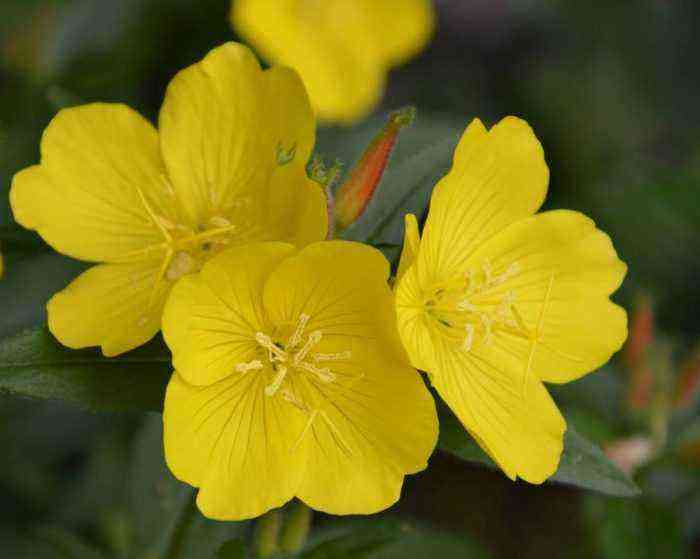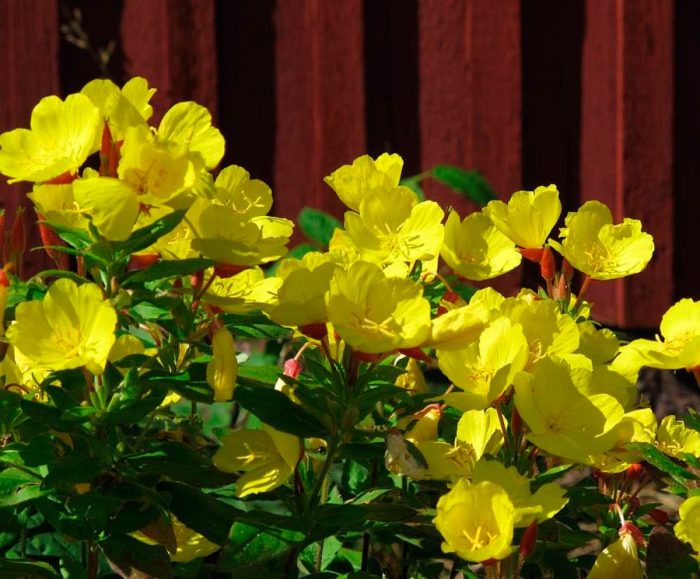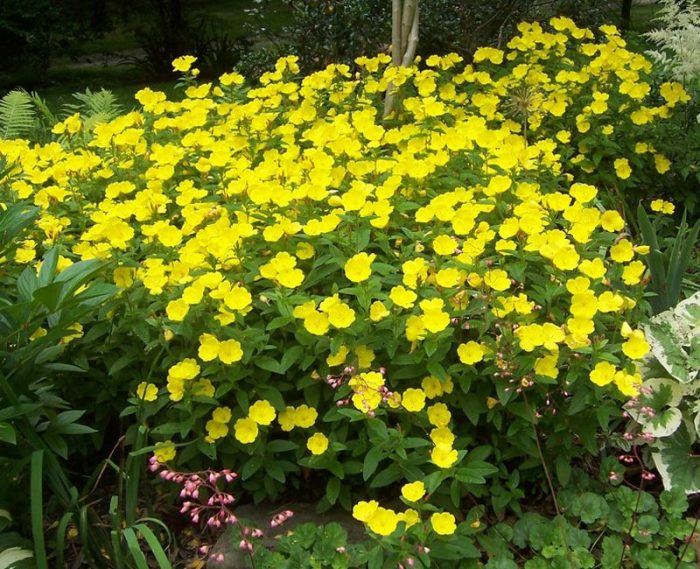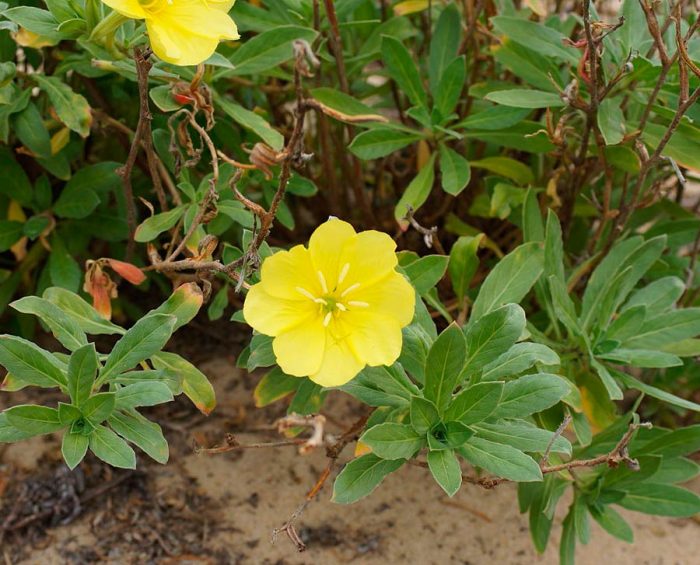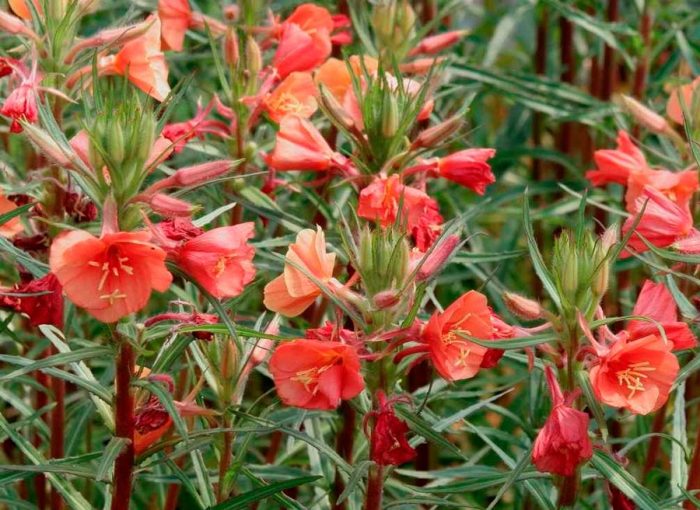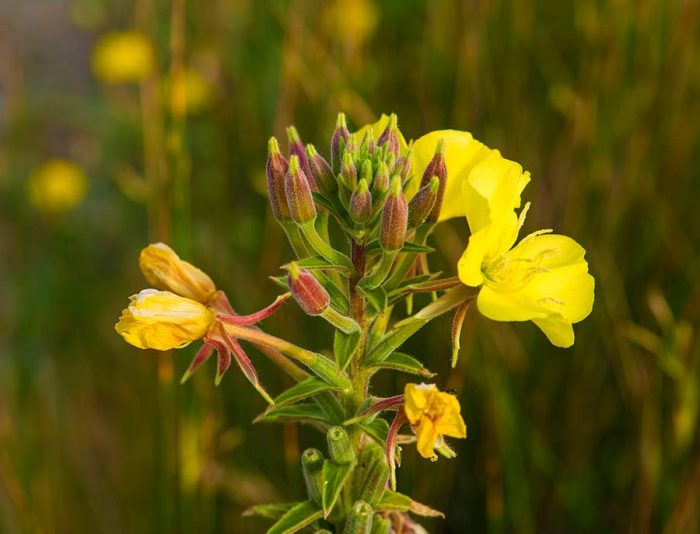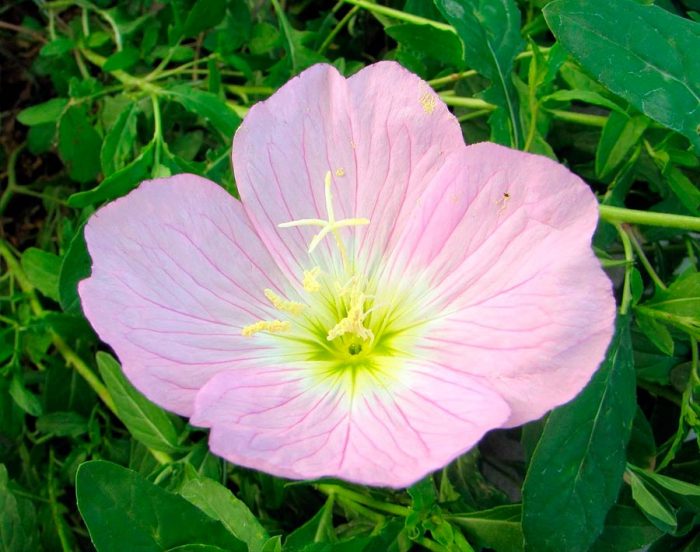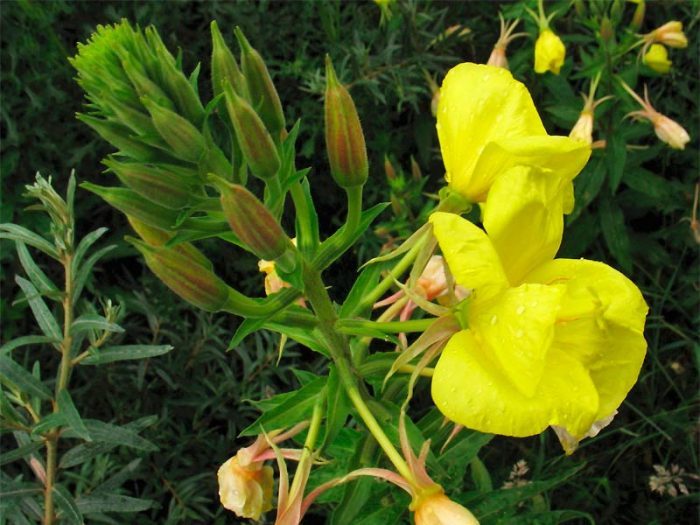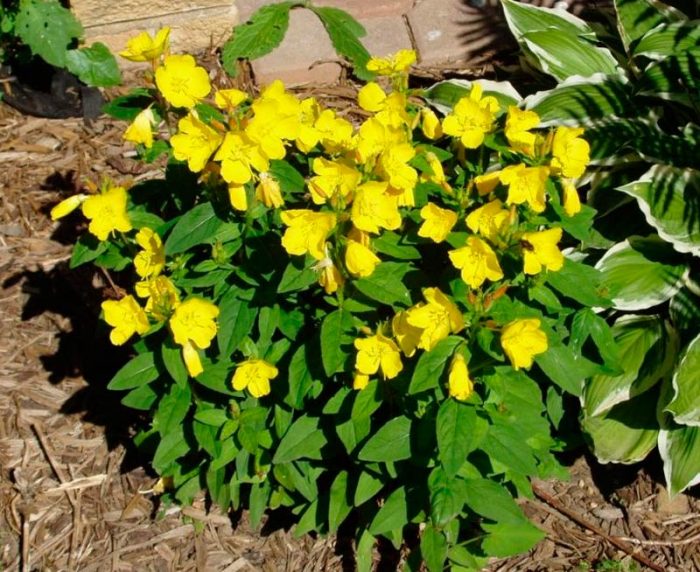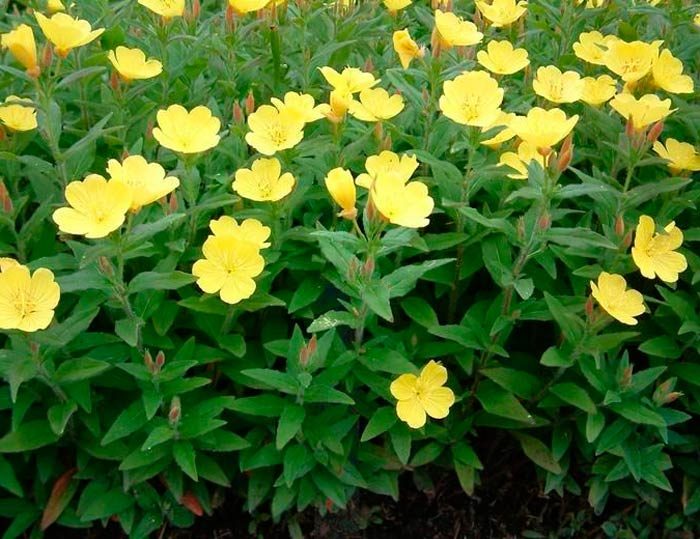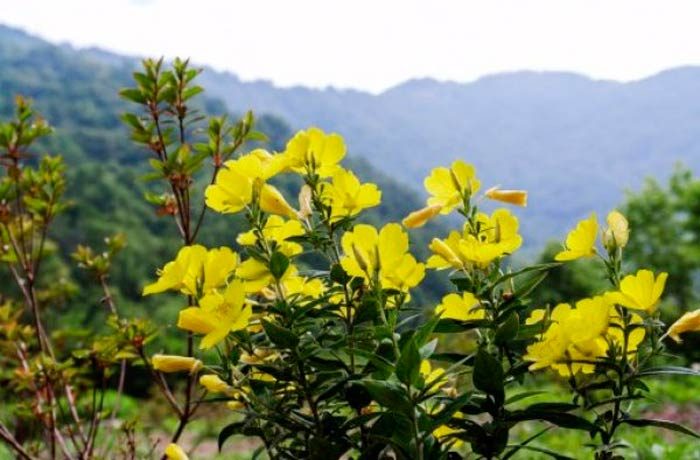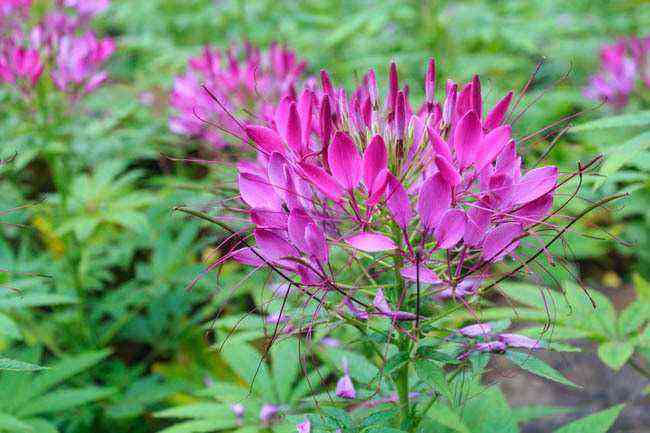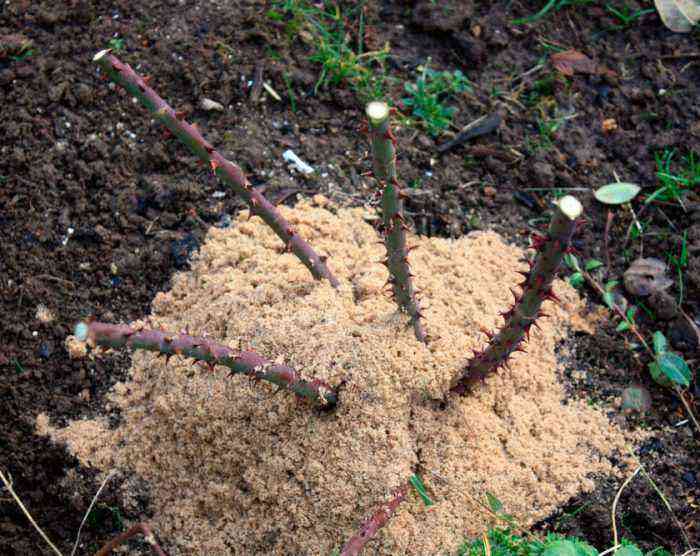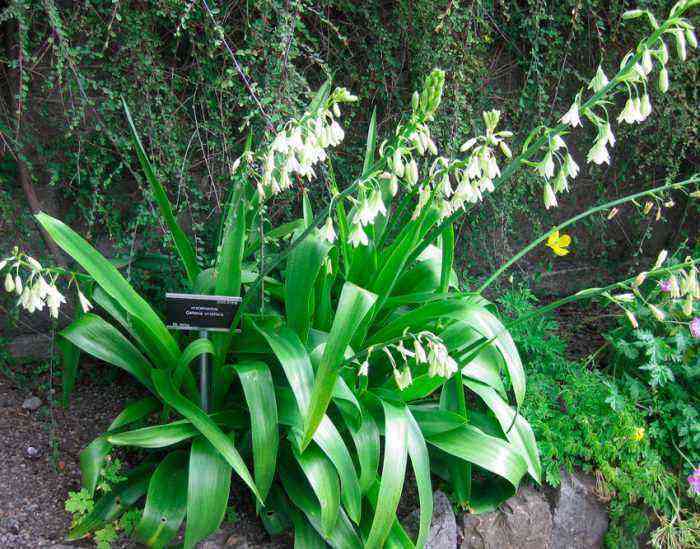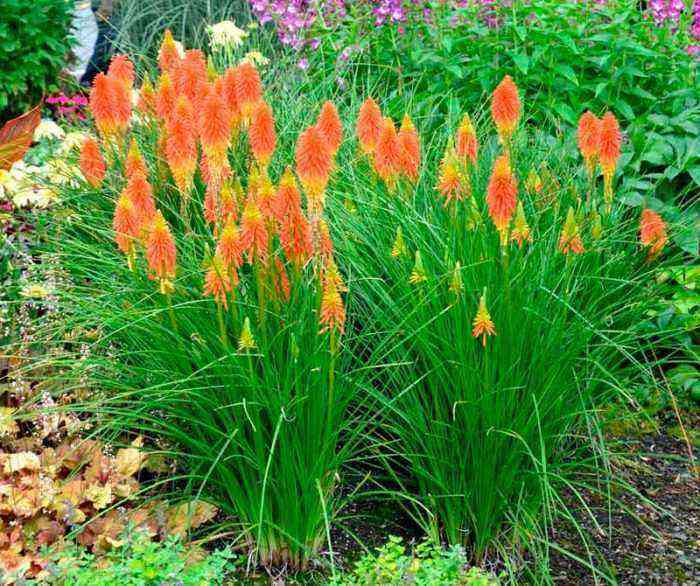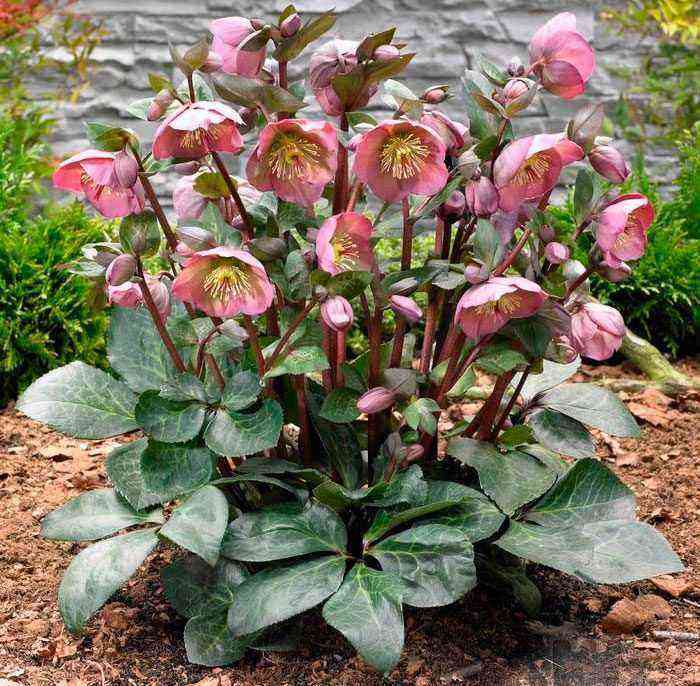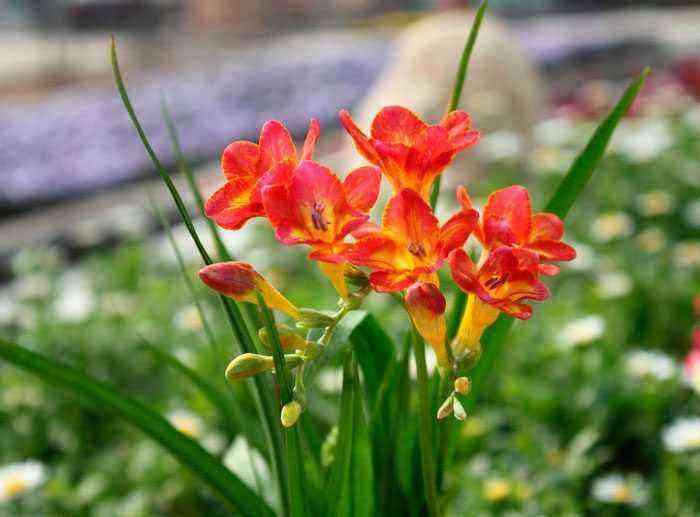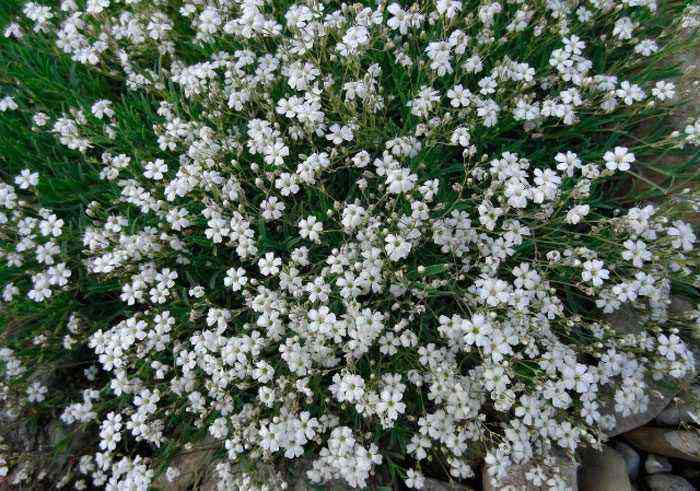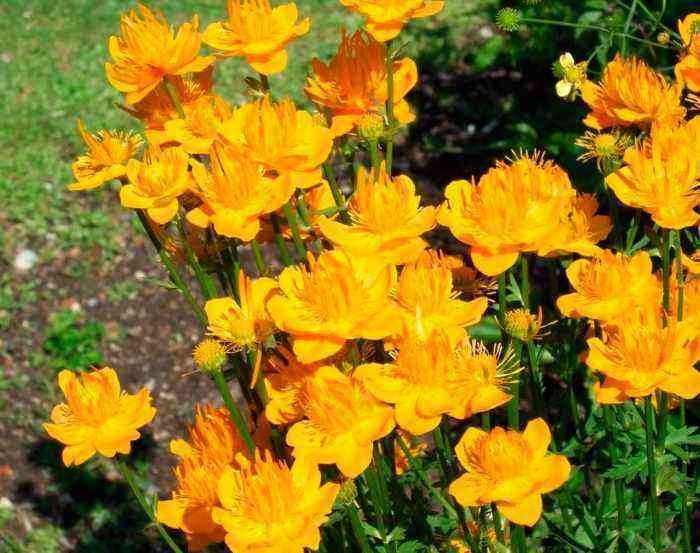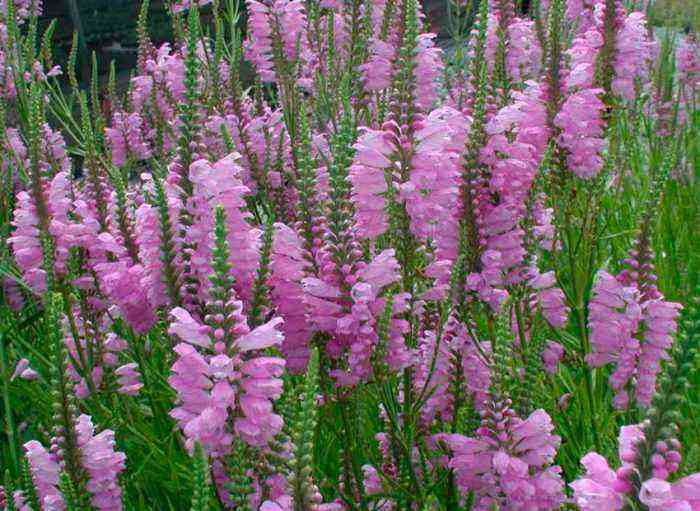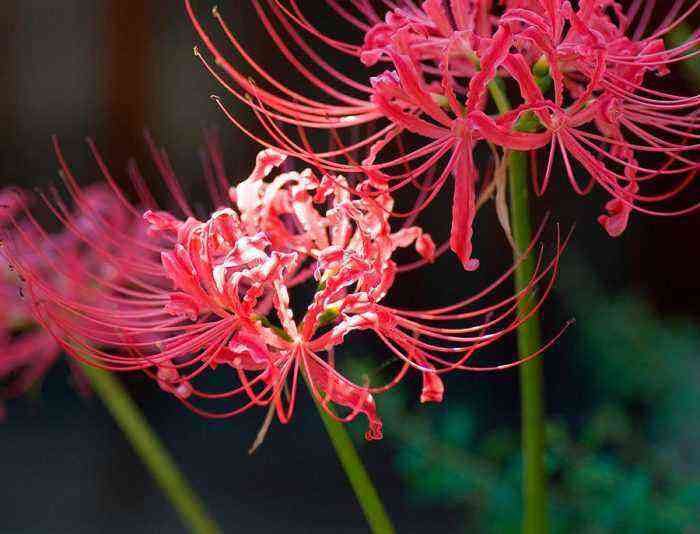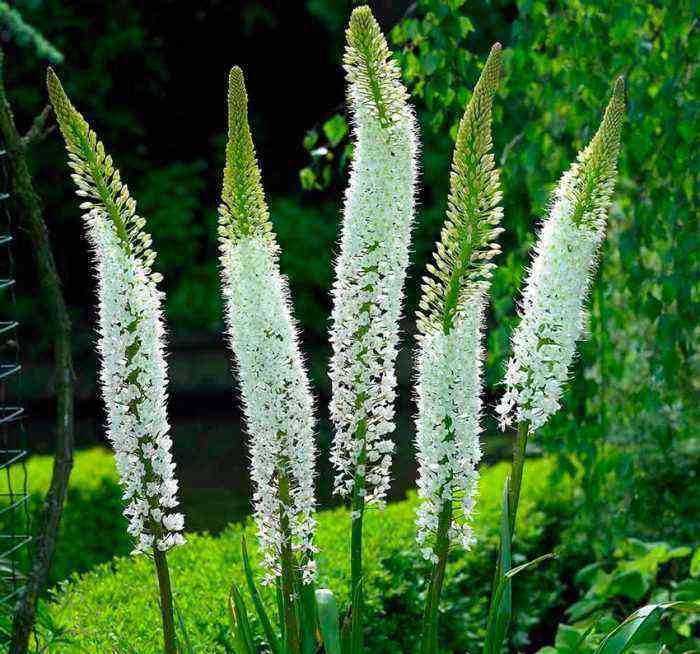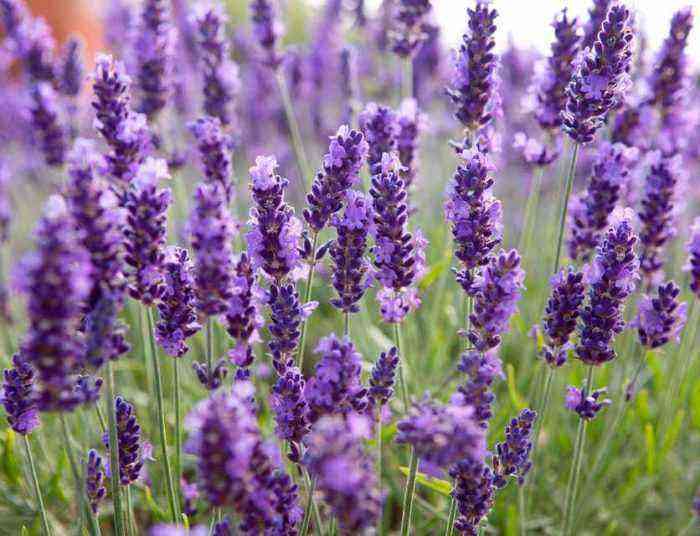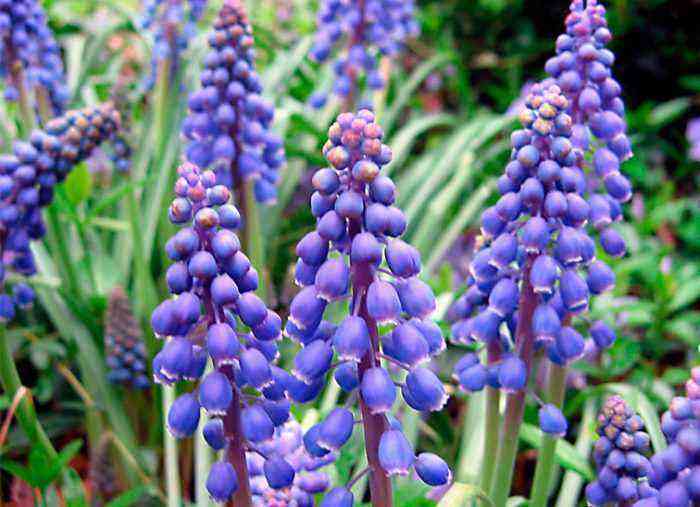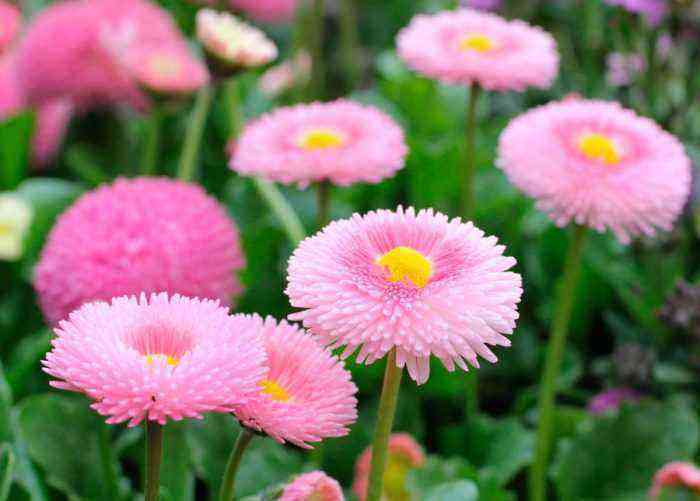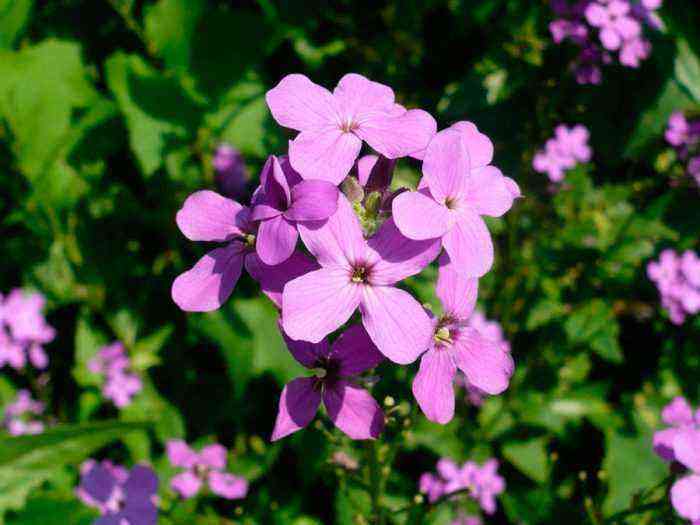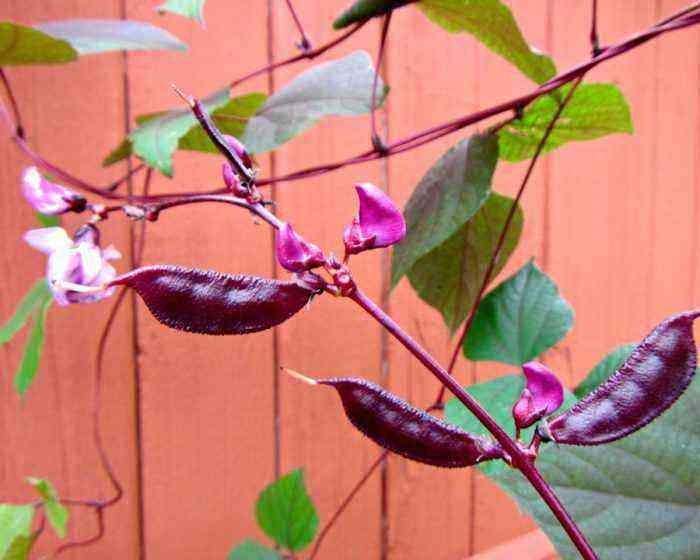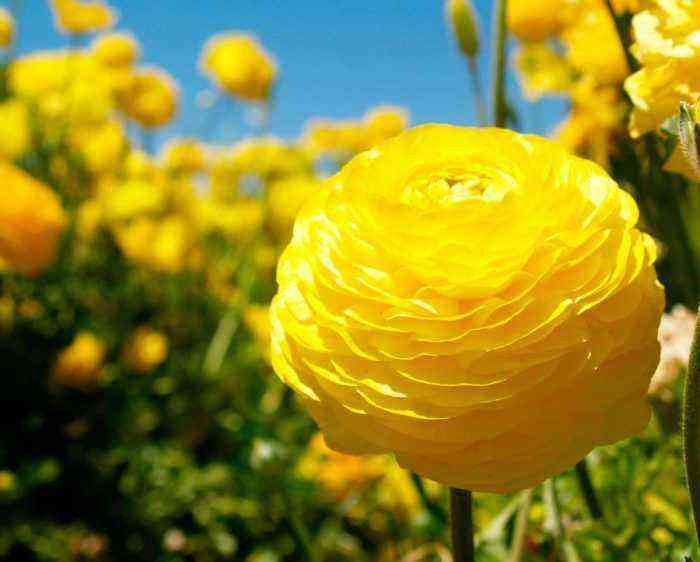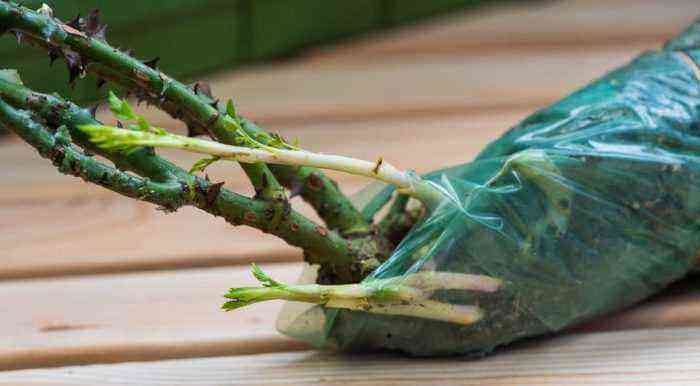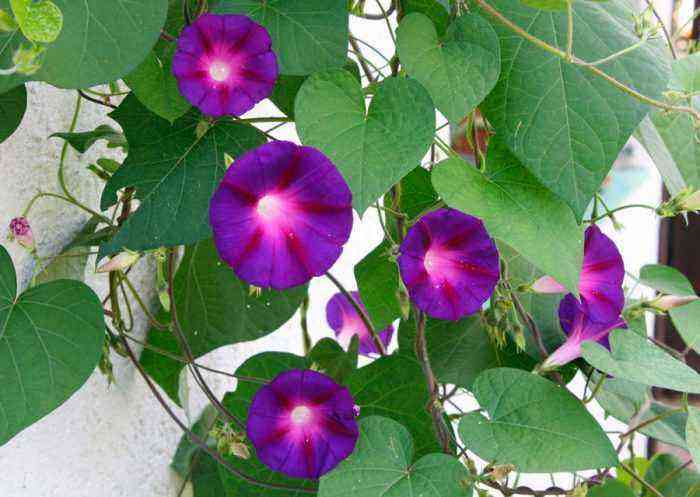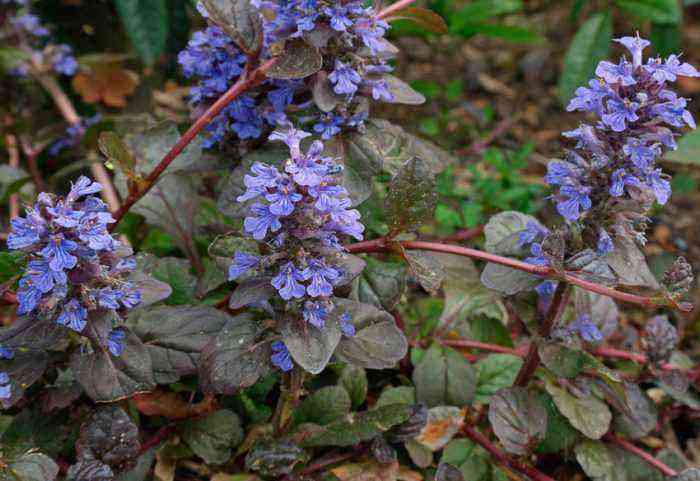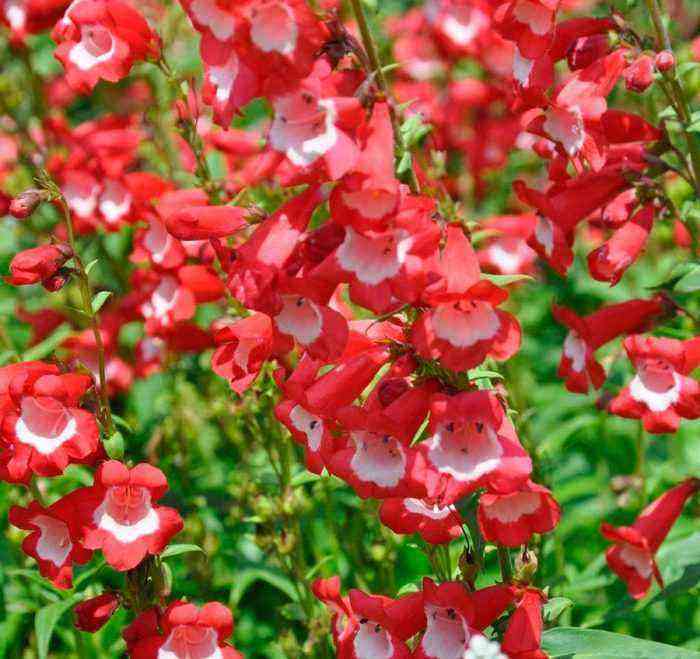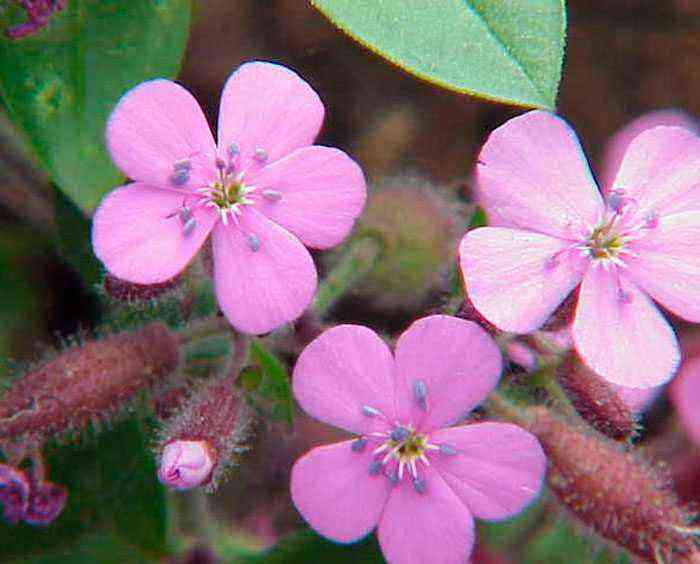The evening primrose plant (Oenothera), also called onager, or primrose, is a member of the Cypress family. According to information taken from various sources, this large genus unites from 80 to 150 species. This genus is represented by shrubs and herbaceous plants, which have a varied appearance. In nature, such a plant is widespread in America and Europe. The scientific name of this genus “evening primrose” includes 2 Greek roots, translated as: “wine” and “wild beast”. In ancient times, people believed that if a plant was poured with wine and a wild animal sniffed it, then this animal could later be tamed very easily. This plant has another name – “night candle”. Gardeners cultivate it as a medicinal and ornamental plant.
Evening primrose features
Evening primrose is a rhizome plant that can be a perennial, biennial or annual. The height of the bush varies from 0,3 to 1,2 meters. Creeping or straight shoots are coarsely pubescent. Alternately located leaf plates are serrated, pinnately dissected, simple, whole-edged or lobed. The flowers reach 70–80 millimeters in diameter, most often they are very fragrant, their color is varied: yellow, purple, red, white, pink or blue. Flowers are placed in a bunch of leaf axils, singly or form a long racemose inflorescence. The opening of each of the flowers is observed at sunset, while they wither after 24 hours. On a cloudy or rainy day, the flowers do not close at all. If the weather is sunny, then they close at about noon, but by this time flies, bees and other insects will have time to pollinate them. The primrose bloom is observed in June – September. The fruit is a box, and it contains up to 3 thousand seeds.
Growing evening primrose in the garden
Planting evening primrose
A sunny area is best for growing a primrose, but it can also grow in a little shade. The composition of the soil for such a plant is unimportant, however, those areas that are swampy or excessively wet are not uniquely suitable for it. The fact is that it belongs to those plants that tolerate drought better than stagnant water in the soil. Evening primrose will grow best on light sandy soil with a pH of 5,5–7,0.
If you decide to decorate your plot with evening primrose, which is a biennial, then you can grow it through seedlings. In the last days of February or the first days of March, seeds are sown in seedling boxes filled with a suitable substrate. After the seedlings that have appeared grow up and get stronger, they are planted in open soil, while keeping a distance of 0,5 to 0,6 meters between the bushes. The seed can, if desired, be sown directly into the open soil. Sowing is carried out in the last days of April or the first in May, or you can do this before winter. Seeds are sown in moistened soil in 2 or 3 pieces, while they need to be buried in the ground by 5-10 millimeters. When sowing, you need to adhere to the 30×30 centimeters scheme. But first it is necessary to prepare the site, for this it is carried out by digging it to an average depth, at the same time fertilizers must be added to the soil, so, 1 kilograms of humus (compost) and 3 tbsp are taken per 2 square meter. Nitrofoski. After the seedlings appear, they need to be opened, keeping a distance of at least 10 centimeters between the bushes. Plants may need a few more thinning, depending on the species and variety, as a result, each of the bushes should have a sufficient feeding area. During the first season, the formation of a basal leaf rosette and a root system is observed in perennial and biennial primrose trees, while flowers and peduncles grow only in the next year.
Evening evening care in the garden
Young bushes are watered systematically 1 time in 7 days until they are completely rooted. Adult plants need watering only during a prolonged dry period. When the plant is watered or it rains, it is imperative to loosen the soil surface around it while pulling out all the weeds.
If, during the preparation of the site for planting, all the necessary fertilizers were not introduced into it, then in the spring it will be necessary to carry out foliar feeding with a weak solution of a mullein. If all the necessary fertilizers have been added to the soil, then the bushes will need to be fed during flowering by the root method and use a complex mineral fertilizer for this. During the flowering period, wilted flowers should be regularly removed from the bushes and this must be done, thanks to this, the flowering will be longer, while the evening primrose will not be able to reproduce by self-sowing.
In some species, the root system gives growth after growth. In order to limit the growth of roots, it is necessary to dig in sheets of metal or slate around the flower bed into the ground to a depth of about 25 centimeters. Evening primrose grows very quickly, in this regard, at the first signs of degeneration, the plant must be removed from the soil, divided into several parts and planted in a new area. It is recommended to carry out this procedure at least once every 1 or 3 years. In the last days of the season, when the flowering is completely over, the two-year-old primrose must be dug up and burned, while the ground part of the perennials is only cut off.
Perennials do not need shelter for the winter. However, if, according to forecasters, the coming winter will be little snow or frosty, the bushes in late autumn should be covered with compost or peat.
Types and varieties of evening primrose with photos and names
Gardeners cultivate only perennial and biennial species and varieties of evening primrose. In mid-latitude gardens, you can find such biennialsAs:
Oenothera drummondii
The height of such a shrub varies from 0,3 to 0,8 meters. The powerful stem is highly branching. Opposite solid leaf plates pointed to the apex, elongated lanceolate and dark green in color. Fragrant four-petal flowers reach 70 millimeters in diameter and have a yellow color.
Evening primrose (Oenothera versicolor)
The height of such a biennial plant is about 1,2 meters. The color of the flowers is orange. The most popular among gardeners is the variety of this type Sunset Boulevard: the height of the bush reaches 0,35-0,45 meters, and in diameter – from 0,15 to 0,25 meters, it is decorated with brick-orange flowers.
Biennial evening primrose (Oenothera biennis)
Or evening evening primrose, or evening evening primrose. The shoots of the bush are erect, and they reach a height of 1,2 meters. There are many short hairs on their surface. Solid, sparsely toothed, almost whole-edged lanceolate leaf plates have a length of about 20 centimeters. The flowers of the correct shape reach 50 millimeters in diameter, they are part of the terminal brushes. They are painted in a lemon-yellow hue, and open in cloudy weather or in the evening. The most popular is the variety of this type Evening Dawn: the height of the bush is about 100 centimeters, the fragrant golden flowers have a red tint.
Evening primrose (Oenothera speciosa)
The height of the bush is about 0,4 meters. Oblong sheet plates have a sparsely toothed edge. The apical few-flowered ears consist of fragrant cupped flowers, which reach 50 millimeters in diameter, they have a white or pink color.
Evening primrose (Oenothera erythrosepala), or Lamarck evening primrose
The origin of this biennial has not yet been precisely established. There is a version that this species appeared in the Old World as a result of mutation. The height of such a strongly branching upright bush is about 100 cm. Oval-lanceolate smooth leaf plates have a greenish color. Dense racemose inflorescences are composed of yellow flowers. This species has been cultivated since the 19th century.
Gardeners cultivate the following perennial species:
Evening primrose (Oenothera missouriensis), or large-fruited evening primrose
This species is native to the south of the central part of North America. The height of the ascending shoots varies from 0,3 to 0,4 m. The shape of dense leaf plates is narrow-lanceolate or oval. Single fragrant flowers, almost lying on the ground, reach about 100 mm in diameter and have a golden yellow color. Such a spectacular species has been cultivated since 1811.
Evening primrose (Oenothera perennis = Oenothera pumila)
Its homeland is the eastern part of North America. The height of such a low-growing bush is about 0,25 m. The shape of the leaf plates is narrow-lanceolate, and their width is about 15 mm. Spike-shaped inflorescences consist of yellow flowers that reach about 15 mm in diameter. This species has been cultivated since 1757.
Evening primrose (Oenothera tetragona), or evening primrose Frazera
This plant comes from the eastern part of North America. The height of the bush is about 0,7 m. The shape of the leaf plates is oval, and their color is greenish-blue, while in autumn it changes to pale red. The scutes are composed of fragrant yellow flowers. The most popular varieties are:
- Sonnenwende – the color of the flowers is golden yellow;
- Freewerkeri – the buds and shoots are red, and the flowers are golden yellow;
- Hoes Licht – color of flowers canary yellow.
Common evening primrose (Oenothera fruticosa)
The homeland of such a plant is the east coast of North America. The height of this shrub is about 1,2 m. The shape of the leaf plates is elongated-oval, and their color is dark green. Yellow fragrant flowers reach 50 mm in diameter. This species has been cultivated since 1737.
Evening primrose properties: harm and benefit
Useful properties of evening primrose
Due to its chemical composition, evening primrose is a medicinal plant. It contains saponins, carotenoids, steroids, flavonoids, tannins, phenol carboxylic acids, polysaccharides, anthocyanins, mucus, polyterpenoids, a large amount of vitamin C, as well as macro- and microelements calcium, magnesium, potassium, sodium, zinc, manganese, selenium and iron. The roots contain resins, sterols and reducing sugars.
A decoction is prepared from the root, which is used in alternative medicine during the treatment of pulmonary tuberculosis and colds. Evening primrose oil, which is extracted from seeds, is of the greatest value. It contains polyunsaturated fatty acids, amino acids and proteins. The oil contains a large amount of linolenic acid, which helps to reduce the risk of blood clots in blood vessels, and it also has a beneficial effect on the body in eczema, diabetic neuropathy, liver cirrhosis and rheumatoid arthritis. This oil is part of the funds used for itchy ichthyosis and diathesis. Evening primrose-based products are used in the treatment of thrombosis, tumors, arthritis, asthma and fungal diseases.
An infusion is prepared from the foliage, which is used as an anticonvulsant, as well as for cardiac neuralgia and for inflammation of the kidneys. This tool has a fixing and calming effect, and it is also used externally as an antimicrobial drug.
To prepare the infusion, which is used for diarrhea, take 1 tbsp. freshly boiled water and 2 tsp. chopped herbs, the infusion will be ready after 1 hour. The filtered remedy should be drunk throughout the day in small portions.
A tincture is prepared from such a plant, which helps with severe dehydration. For its preparation, alcohol is combined with evening primrose herb (4: 1), the vessel is tightly sealed and placed in a dark, cool place for 21 days for infusion, while you must not forget to shake the mixture regularly. The filtered remedy is drunk three times a day, 20-30 drops.
Противопоказания
With an uncontrolled intake of evening primrose, there is a high probability that weakness, nausea and headache will appear. Such funds are forbidden to be taken by people with epilepsy or schizophrenia. They should not be taken together with phenothiazines and epileptogenic drugs.
